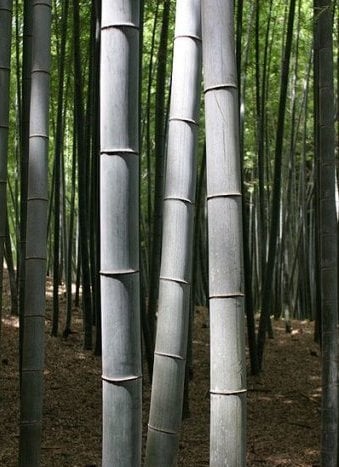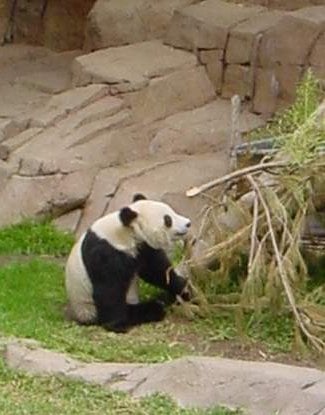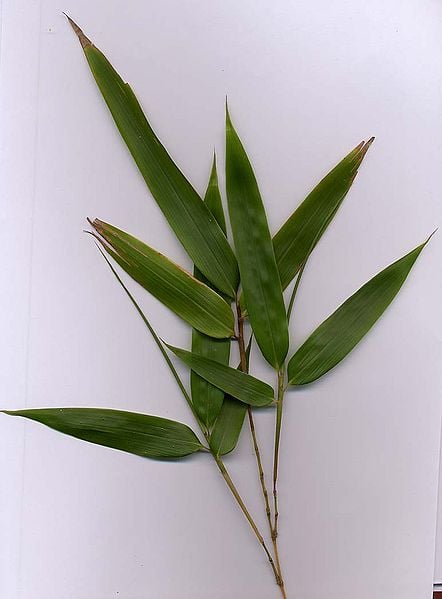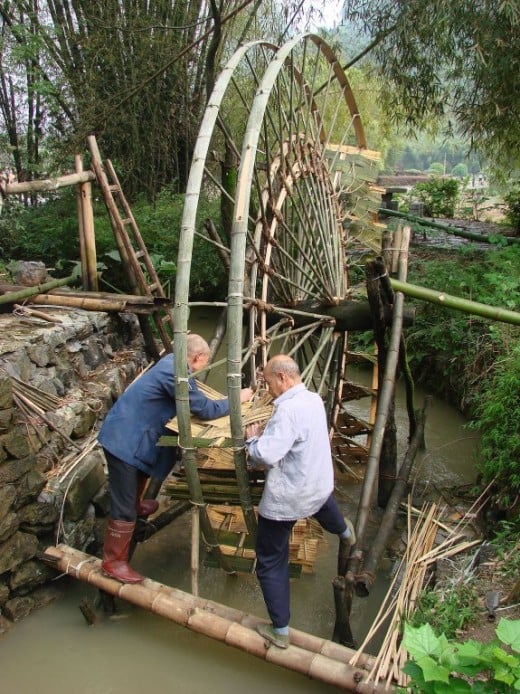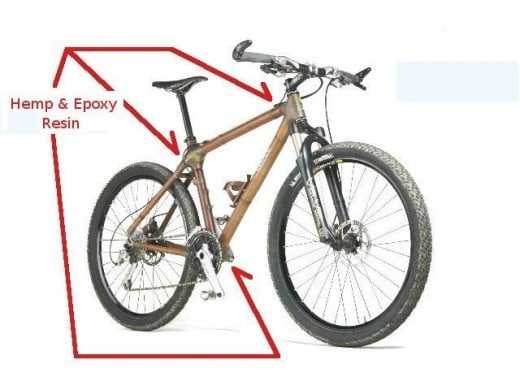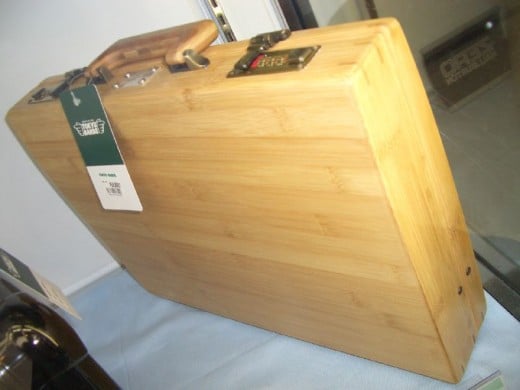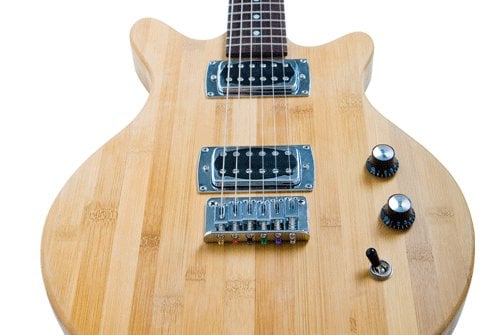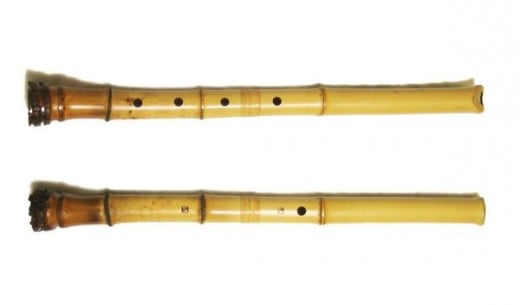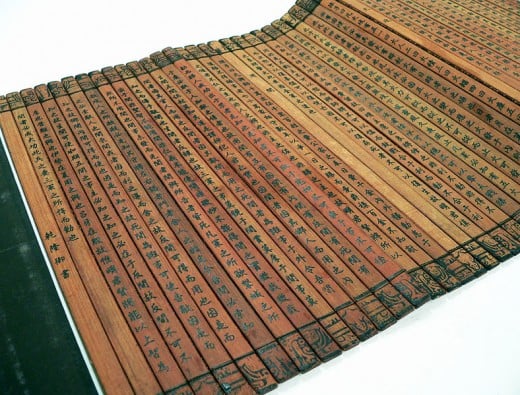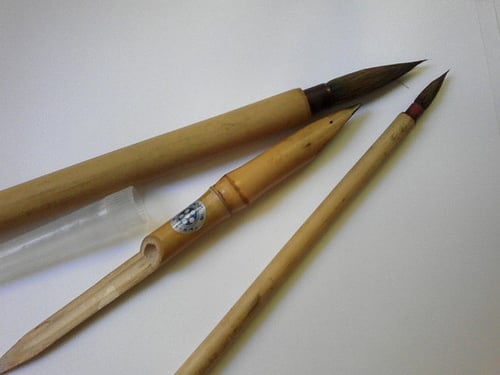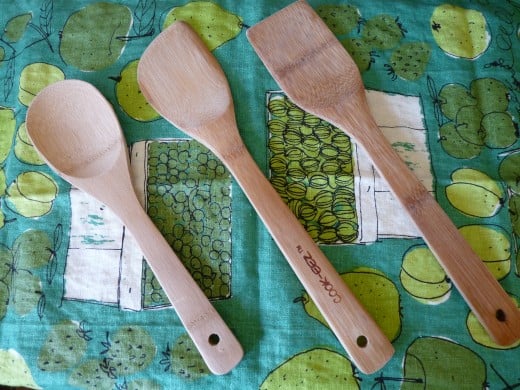What are the Benefits of Bamboo
Where did Bamboo Originate
Bamboo is found in Southeast Asia and the Americas. It is thought that the plant is at least thirty million years old and it was likely a food source for a wide range of animals.
Because most of the continents of the earth (South America, Africa, India, Australia, and Antarctica) were one super-continent called Gondwanaland bamboo's range may be explained by this alone.
There are currently known twelve thousand species of bamboo and it can be found in both temperate, dry, and cold conditions. Though bamboo is thought of as a tropical plant some speicies can survive and thrive at altitudes of up to 12,000 feet.
Bamboo will not grow where temperatures are freezing year-round, but will grow readily almost anywhere else.




Bamboo is Grass
Bamboo is a type of grass and for that reason one of the fastest growing plants on the planet.
Some varieties of bamboo can grow at a rate of a two feet a day. Of course, bamboo needs sunlight and ample water for this phenomenal growth rate to occur. Bamboo matures in three to five years. When compared to other soft-woods, which take ten to twenty years to mature, bamboo is a highly renewable resource for construction material.
Bamboo generates thirty-five (35%) percent more oxygen than trees. In the process it cleans the atmosphere of CO2 and purifies the soil. The roots help prevent erosion and run-off as well as providing shade, a sound barrier, and wind-break.
Bamboo as Clothing
Bamboo fibers are being used as a thread for fabric. Bamboo textiles can be found in everything from undergarments and socks to sweaters. As a fiber bamboo has many advantageous properties. It breathes well, is elastic, soft, and readily takes up dyes. Because of it's affinity for dyes less colorant is needed than with other fabrics. It is also less course than hemp, burlap, and linen.
Another factor in bamboo as fabric is that it naturally resists insect attack. For this reason fewer pesticides need to be used in growing the plant. Because bamboo is basically a weed it also requires little or no fertilizer during it's growth cycle. Finally, because bamboo grows so quickly it is a highly renewable source of fiber.




Bamboo as Building Material
Bamboo is both strong and light. It is also extremely flexible (see water wheel picture above) making it one of the best building materials on the planet. Add the fact that it is so fast growing and therefore abundant it's a wonder the material is not used more often in more locals.
Currently bamboo is used whole or in laminated strips as:
- Flooring (laminate)
- Wall paneling (laminate)
- Stud (support) replacement (whole)
- Rebar in cement structures (whole or strips)
- As a primary material in scaffolding (whole)
- For bicycle frames (see pictures at right)
- As a wood replacement in briefcases (see picture at right)
Bamboo has a tensile strength of 18,000 pounds per square inch making it an easy rival to steel.
Bamboo Briefcase
I have personally owned a bamboo briefcase (very much like the picture above) for eight years. The case itself has held up quite well in those eight years. A few months ago one of the latches (made of brass) fractured. I am now looking for a replacement latch as the case itself is still in excellent condition.
In all the years I've had it I only needed to "polish" the wood (with a ScotchBright Padtm) to remove dirt and scuff marks. Every time I used that pad the case ended up looking like new again.
Bamboo as Medicine
In China, bamboo preparations have long been used as a healing agent and for treating infections. When powdered dried bamboo sap is used to treat asthma and cough. Bamboo root has been used to treat kidney disease.
Bamboo sap has also been used as a fever reducer and the powdered ash of the bark like powder to relieve the itching of prickly heat.
Bamboo has also been used as treatment by indigenous cultures for the following:
- anti-diarrheal
- to restore the menstrual cycle
- as a labor inducer
- to cause spontaneous abortion
Of course none of these "folk" remedies can be currently backed up with scientific findings so far. However drug science has long looked for "folk remedies" for new products with particular properties. For example the hormone in birth control pills was found in an African yam. Scientists found it having heard that some tribes used raw yam as a pregnancy terminator.
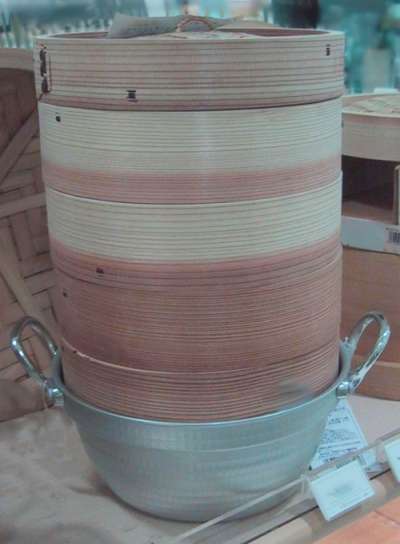
Bamboo as Food
Bamboo shoots are edible and are used in a wide variety of Asian dishes as well as an animal and fish food.
Fermented (with turmeric and oil) bamboo shoots are a popular ingredient in the Himalayas. This dish is served with potatoes and rice. In Indonesia thin strips of bamboo shoot are boiled in coconut milk and spices. In Japan powdered bamboo bark is used as a natural preservative in food storage.
Larger bamboo segments can even be used as cooking pots as bamboo does not burn easily, yet passes heat readily into the food item being cooked. Bamboo is also a good material for chop-sticks, spatulas, and flat spoons.
It is also said that food cooked in bamboo picks up some of the flavor from the bamboo itself; enhancing the flavors of the food being cooked.
Bamboo as Aircraft Runway
There is a documented case of bamboo stalks (cut in quarters at length) being used as a forest runway in Borneo.
During World War II as the Allies were invading Japanese held territory, some U.S. bombers were shot down or forced down in the jungles of Borneo. The native people there helped rescuers from the British Army find these fliers. Each flier was flown out and back to U.S. held territory in a small two-seater airplane. The plane landed and took off from an improvised runway made of bamboo.
Less Than Usual Bamboo Recipes
Bamboo Shoot and Eggplant Currey
Ingredients
- 2 Tablespoons vegetable oil
- 4 Tablespoons Green Curry Paste (see below)
- 3 Cups (720ml) coconut milk
- 3 kaffir lime leaves, roughly torn
- 3 1/2 ounces (100g) green or purple eggplant, chopped
- 3 1/2 ounces (100g) bamboo shoots, sliced
- 1 red or yellow bell pepper, sliced
- 1 3/4 ounces (50g) button mushrooms, quartered
- 1 Tablespoon soy sauce
- 1/2 teaspoon salt
- 2 Tablespoons palm sugar (substitute light brown if desired)
- 15-20 fresh basil leaves, roughly torn
Directions
- Heat the oil in a large saucepan, sauté the
green curry paste briefly, and add the coconut milk.
- Bring to a simmer
and add the kaffir lime leaves, eggplant, bamboo shoots, bell pepper, and
mushrooms. Stir to mix.
- Cook over medium heat for 5 minutes.
- Add the soy sauce, salt, and sugar, and cook for a further 5—7 minutes until all the vegetables are tender.
- Mix in the basil leaves and turn off the heat.
- Serve Immediately
GREEN CURRY PASTE (Nam prik gaeng khiao wan)
Makes
about 1 cup (240ml)
Ingredients
- 10 small fresh hot green chilies
- 3 shallots, sliced
- 3 cloves garlic, halved
- 1 1/4-inch (3-cm) cube galangal, peeled and chopped
- 2 stalks lemongrass, finely chopped
- 1 teaspoon freshly grated lemon rind
- 1 ounce (30g) fresh coriander with stems and root
- 10 black peppercorns
- 1 Tablespoon coriander seeds
- 1 teaspoon cumin seeds
- 1/2 teaspoon salt
- 1 teaspoon vegetable oil
Directions
- Put all
the ingredients, except the oil, in a food processor and grind to a
smooth thick paste. You may need to scrape down the side of the bowl from time to time.
or use a mortar and pestle to grind the ingredients, a few at a time. - Mix in the oil and store in an airtight container in the refrigerator for up to two weeks.
Chinese Chicken with Bamboo Shoots and Water Chestnuts
Ingredients
- 1 Tablespoon dry sherry
- 3 Tablespoons soy sauce
- 1 cup bamboo shoots, sliced
- 3 Tablespoons sesame oil
- 1 clove garlic, crushed
- 3 Tablespoons chives, chopped
- 1 Tablespoon fresh ginger, slivered
- ½ lb chicken breast, cut in thin strips
- 2 cups water chestnuts, peeled and sliced
- 1 teaspoon cornstarch
Directions
The trick with stir-frying is to add the toughest cooking items first and then those that take longer to cook.
- Mix sherry, soy sauce and cornstarch; set aside.
- Heat frying pan; add oil and heat thoroughly.
- Add chives, ginger, and bamboo shoots; stir-fry 1 minute.
- Add chicken to stir-fry and cook for 3 to 4 minutes or until light brown.
- Add water chestnuts and garlic; stir-fry one more minute.
- Add cornstarch mixture and stir another minute or until thickened.
- Server immediately.
Though the original recipe has you adding the garlic along with the chives and bamboo, garlic cooks quickly, burns readily, and has a very bitter taste if overcooked. Thus I recommend adding the garlic with the water chestnuts near the end.




Other Uses
Water Desalination
Bamboo is reportedly used to desalinate sea-water.There are a number of reverse osmosis filter manufacturers who use bamboo charcoal (carbon) as a clearing/cleaning agent in water filtration.
Water Source
Live bamboo is also recommended as a source of fresh water in survival situations. Small quantities of water can be found between the joints of the bamboo plant.
Cookware
Bamboo is a popular material for kitchen utensils and tools. I personally own a set of tools (pictured) which serve as turner, spatula, and spoon. They are very "kind" to my non-stick pots and pans, pick up no flavors and seem not to impart flavors either. Best of all they are easy to clean.
Musical Instrument
Bamboo, due to it's hollow structure, makes it a natural choice for flutes and wind chimes. As a flute, bamboo has been used as a material in Ghana, India, China, Japan, Laos, Thailand, Cambodia, Vietnam, and in the Andes
Pen and Paper
Bamboo strips and slender stalks were widely used in China (200 BCE) as both paper and pen.
Disclaimer
The author was not compensated by any mentioned manufacturer for the writing of this article. Though I have mentioned a brand-name I was not paid by 3M or any other company for this mention. In other words I was not compensated with cash, discounts, or freebies for the writing of this article or any of its content.
The author does stand to make a small percentage of profits on advertising, but the author has no control over that advertising

